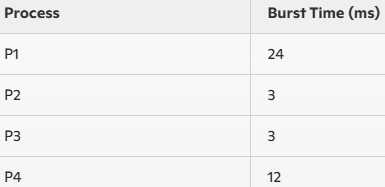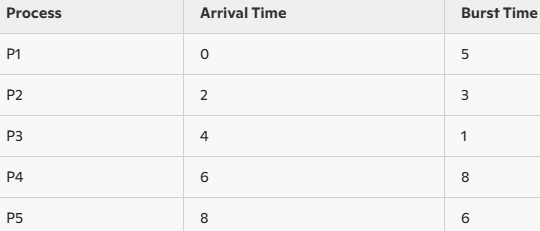Correct option is B
The Shortest Job First (SJF) scheduling algorithm performs the worst in terms of average waiting time when there are a few very long processes among many short processes. This is because SJF prioritizes shorter processes, which can lead to very long processes waiting a long time to be executed, increasing the overall average waiting time.
Important Key Points:
1.
Shortest Job First (SJF):
· Schedules processes based on the shortest burst time.
· Can be preemptive (Shortest Remaining Time First) or non-preemptive.
2.
Performance:
· SJF minimizes average waiting time when all processes have similar or short burst times.
· Can cause long processes to wait indefinitely (starvation) if short processes keep arriving.
Knowledge Booster:
·
(a) When all processes have similar burst times: SJF performs well because there is no significant difference in burst times.
·
(c) When all processes have equal burst times: SJF performs effectively as it behaves similarly to FCFS in this case.
·
(d) When processes arrive at regular intervals: SJF performs efficiently if burst times are short or similar.
·
(e) When the system has only one process: SJF performs trivially well since there is no competition.






 English
English 40 Questions
40 Questions 20 Mins
20 Mins

